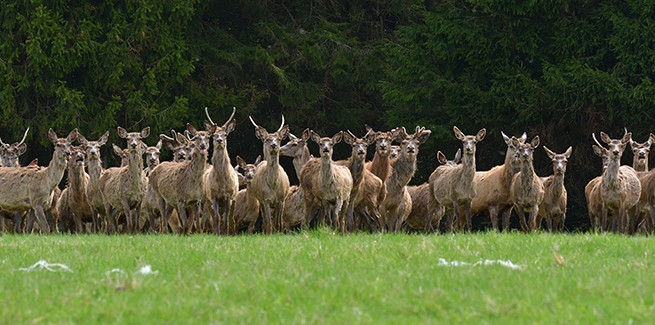Deer have been diagnosed with Omicron. Could they be a reservoir for future variants?

When white-tailed deer on New York’s Staten Island were diagnosed with the Omicron variant two weeks ago, it marked the first time Omicron has been found in wild animals, although deer were previously known to contract other variants; to date, the coronavirus has been found in deer in 15 states, including Iowa and Ohio.
However, the news that Omicron had infected white-tailed deer populations was not unexpected.
Veterinary epidemiologist J. Scott Weese, DVM, DVSc, DACVIM, told NEWStat it’s not surprising that deer became infected with Omicron, because scientists have known for some time that deer were susceptible to SARS-CoV-2. “The question was whether they’d actually be exposed [to the virus] in the wild.”
More to the point, now that we know they’re susceptible both to the virus and to exposure from people, it’s likely that any new variants that crop up in humans will also eventually show up in deer.
The good news? Weese said there’s no evidence that deer are transmitting omicron back to people. A contributing reviewer of the 2018 AAHA Infection Control, Prevention, and Biosecurity Guidelines and an infectious diseases veterinarian at the University of Guelph in Ontario, Weese added a caveat: “Since omicron is being transmitted so effectively [human to human] it would be hard to discern a deer to human transmission.”
He notes that few people would have contact exclusively with deer. “Most people who have deer contact would have many more likely human sources of exposure that couldn’t be ruled out.”
A larger question is whether the virus could mutate in the deer population and produce a new variant infectious to humans.
“That’s one of the main concerns,” Weese said. And that’s related to another concern: whether deer can be a long-term reservoir for the virus. Even if we control the spread of SARS-CoV-2 in people, would we still have ongoing exposure risk from deer and other wildlife? “Variants are random events,” Weese said. “If the virus circulates widely and perpetually in the deer population, mutations will happen.” Whether any of those would be bad for humans, in terms of transmissibility or virulence, is impossible to predict.
As for how susceptible species besides deer might be to SARS-CoV-2 variants, that’s an open question.
“We don’t know much about the range of infectivity in other species,” Weese said. “So we have to assume that animals we know are susceptible to other strains (species such as cervids, felids, canine, mustelids, non-human primates, some rodents) are susceptible to Omicron.”
To date, we only know of one species that’s infected humans for sure.
“Mink have infected people,” Weese said. And recent events in Hong Kong revealed the possibility of hamster-to-human transmission—a possibility that raises even more questions about how variants affect different non-human species: “There’s evidence that [the hamsters in Hong Kong] aren’t susceptible to Omicron despite them being susceptible to Delta.”
As for companion animals, Weese said, “Cat-to-human transmission is plausible, but in the grand scheme, almost all of the transmission is likely human-to-cat. And people have much more risk of exposure from [other] people than from dogs and cats.”
But as the pandemic wanes, the relevance of animal SARS-CoV-2 reservoirs might go up if it turns out humans have infected other animal populations besides the ones we know about. “If that happens, “The relative risk of exposure to an infectious person versus [exposure to an] animal will change.”
Photo credit: © Pavol Klimek/iStock/Getty Images Plus via Getty Images



